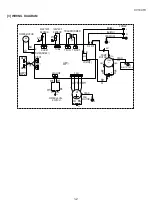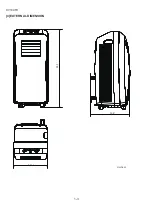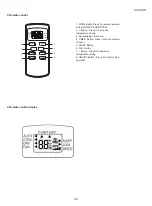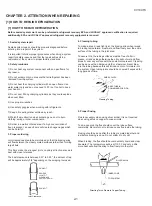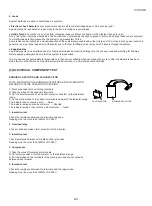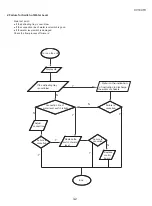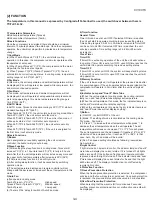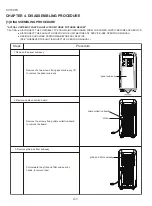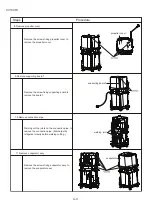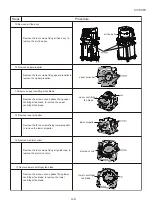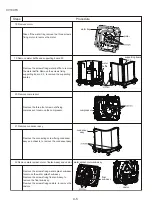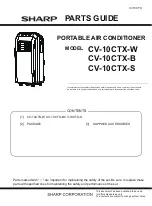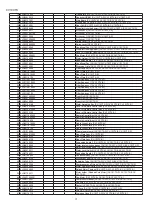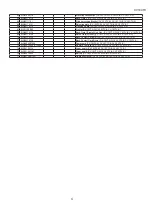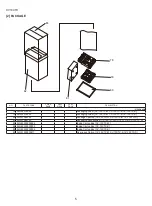
2-
2
CV10CTX
6. Heating the tubing
Direct the torch flame so that the larger tube receives most of the heat.
Silver solder flows at 1200 F and silfos flows at 1300 F.
Heat all around the tubing.
The flame is composed of two cones, a smaller inner cone (pale blue)
in calor and a much larger outer cone. The hottest part of the flame is
at the tip of the inner cone. The flame should be directed at the joint
with the tip of the cone just touching the surface of the tubing.
7. Dehydrating sealed system
Many servicers feel that since air conditioners run with evaporator temperatures above 33 F, moisture will not present a problem.
Nothing is further from the truth. Oxygen in moisture plus the heat produced during compression will react with the refrigerant oil to
produce harmful acids in the system which will break down motor winding insulation, create sludge and pit component parts, reducing
efficiency of the air conditioner and shortening the life of compressors.
There it becomes mandatory that good dehydrating practices be adhered to at all times.
Proper hook up procedures as shown in Figure 5 must be used in order to pull and good vacuum from the system.
The use of a good vacuum pump is very important so that the boiling point of any water in the system will be lowered to a point where
it will vaporize and be expelled from the system in the form of vapor.
7.1. Type of evacuation methods
1.
Piston Type Compressor
No good.
System parts must be above 110 F.
2.
Rotary Vacuum Pump
Disavantages.
Low CFMC. 4 oil gets dirty.
3.
Single State Vacuum Pump
will not clean oil.
Oil must be changed often.
4.
Two Stage Vacuum Pump
will reach 50 microns.
First stage is below atmospheric pressure.
Moisture is removed into second stage which works up to atmospheric
pressure thus keeping oil clean.
Manometer cannot be read to 1/2 mm. Micron gauge reads from
25,400 microns to 0.
It becomes clear that good equipment and maintained properly must be used in order to remove air and moisture from the system.
When a vacuum of 1,000 to 500 microns is reached, block off the vacuum pump from the system.
This is done by closing the value between the pump and system. If the micron gauge does not increase above 1,000, the system is
free of moisture and no leak exists. If the micron gauge increases to higher levels moisture or a leak exists.
OUTER CONE
HOTTEST PART
OF FLAME
INNER CONE
TORCH STEM
HIGH VACUUM PUMP
LARGE DIAMETER
BRAIDED VACUUM
HOSES
HIGH VACUUM
MANIFOLD
DIAL-CHARGE
CHARGING CYLINDER
HIGH SIDE
GAUGE
LOW SIDE
GAUGE
ELECTRIC
VACUUM
GAUGE
TO RELATED SERVICE
VALVE OR PROCESS
TUBES OF THE UNIT.
Hook up for Evacuation
and charging



